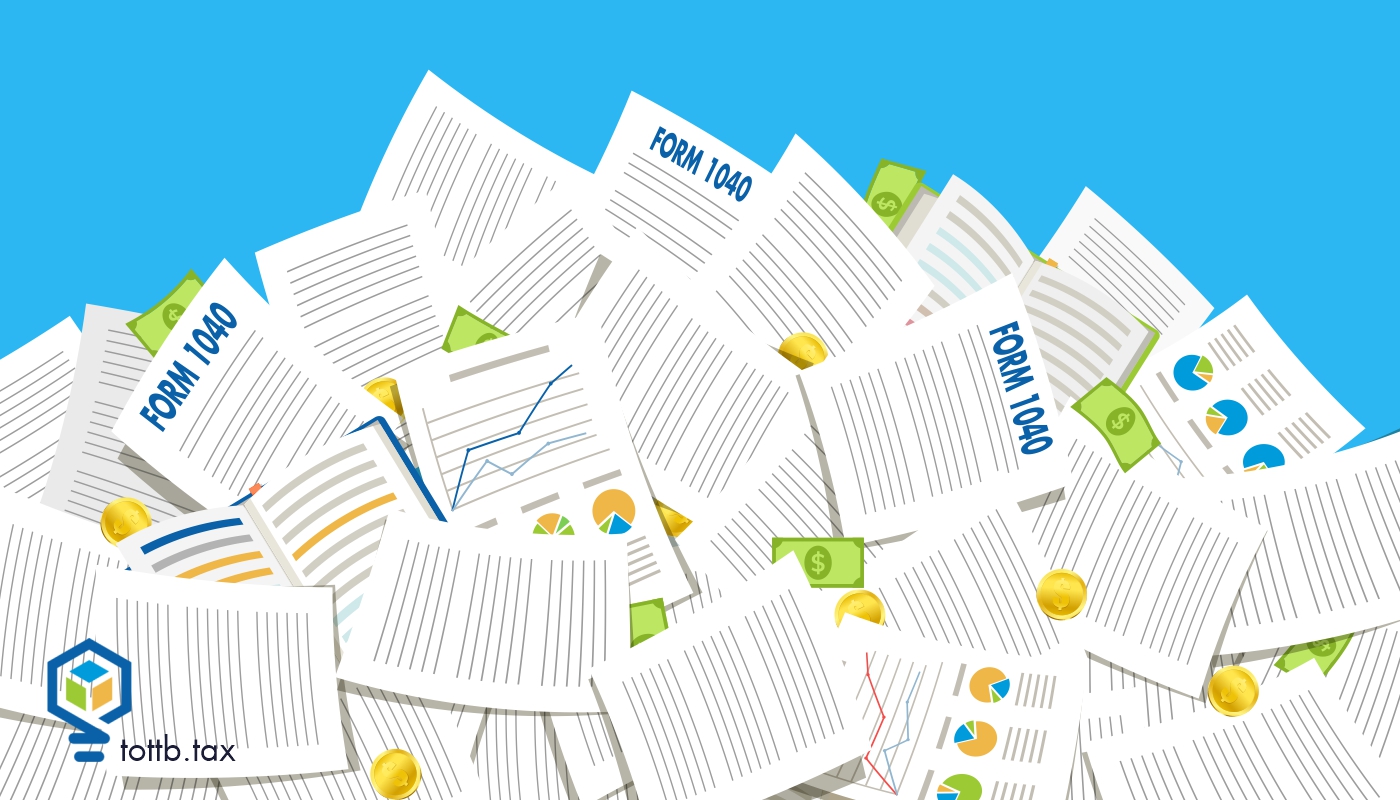CURRENT EDITION

This Is The Only Other Year-End Tax Tip Guide You Need
So as I did last year, I have reviewed a multitude of year-end tax tips articles. One of them is a real standout that you should be sure to check out. If you missed it, you should definitely roll back to the November 15 edition and go over Dominique Molina’s piece, which focuses on what you need to do sooner rather than later in response to OBBBA. It provides more detailed, relevant, actionable advice that you won’t see anywhere else than any of the multitude of pieces I have reviewed. As for the rest, I will give you a basic rundown of what I call the SOSO (same old, same old) and a few suggestions that stand out as different that I will get into a little more along with some thoughts of my own.
READ MOREThe 1099 Nightmare
My attitude toward 1099 compliance changed radically about fifteen years ago. The type of 1099 compliance I am talking about is for business to business services. If you are running a bank or a brokerage house, this will not be any help. I was a partner in a regional firm and frankly I never gave 1099 compliance much thought until I was called in to consult on an audit. Then I got this really scary wake-up call...
Read MoreReporting Cannabis on a Federal Return: A Very Basic Primer
You can find new cannabis dispensaries or head shops on every corner in my neighborhood. But purchase and sale of marijuana has not been legalized on the federal level. What’s an ethical tax professional to do, when your client walks in with the news that they’ve started a cannabis business in your state? Read on to find out!
Read MoreJust Good Business – Review Your Administrative Compliance
Tax season is in full effect, and it is likely that you are seeing and coping with the effects of poor administrative compliance on the part of your small business clients. Instead of bemoaning the fact that so many clients “don’t get it” use some of the time you’re spending on the return to prepare a list of administrative compliance items that the client needs to address. Then, set a (paid) planning appointment for later in the year to help the client address those items. If you do this, and if the client heeds your advice, next filing season more (if not always all) of the client’s administrative compliance will be in order by the time you start preparing their returns. It’s a win-win. Your client gets the opportunity to ensure that they are meeting administrative requirements that protect them from liability or penalties. You get cleaner paperwork (and peace of mind) moving into next filing season. Read on to learn more!
Read MoreTAX COURT ROUNDUP – April 2023
Another active month, with plenty of variety and practice tips. And new Tax Court Rules announced...
Read MoreHow Should a Disregarded Single Member LLC File a W-9?
Although Form W-9 has some other purposes, a company will usually ask you to fill it out if you are a business-to-business service provider . If you don’t provide a TIN to your customer, they may have to subject you to backup withholding . If it is my company that asks you for the W-9, I am not going to do backup withholding if you don’t send me the W-9. I’m just not going to pay you until you cough it up. I believe in learning from experience. But it is better if the experience you learn from is other people’s experience. That is why a very large percentage of my tax writing is from court opinions, most often the United States Tax Court. This piece is my own experience.
Read MoreIRS Installment Agreements: A Potential Cure for Forosophobia
Taxpayers who seek tax planning strategies fall into two categories. We have taxpayers who plan well and want to keep their tax liability manageable and low as possible. Then, we have the taxpayers the IRS hits with a tax bill bigger than they were expecting. Both taxpayers are dealing with a case of forosophobia. When the latter happens the taxpayer often goes into a panic or at least a small sweat. Whether they have the money sitting in a bank account or not, they weren’t intending to spend it on taxes. So, it changes their financial planning. This is when the forosophobia really starts to set in. Forosophobia is the fear of the IRS and taxes. Have you experienced this with your clients? When tax season rolls around, they are anxious to see whether they owe taxes or not. Clients who haven’t made their estimated tax payments and don’t have anything to show for their income hold their breath. They wonder things such as: What happens if I can’t pay? Will I go to jail? The IRS is going to empty out my bank account. Once a taxpayer’s mind starts on this emotional rollercoaster it can be difficult to get them off. But as their trusted tax advisor you are in a very powerful position. Not only can you help them calm down and breathe again, but you can also get their lives back from this fear. As a licensed professional you can step in their shoes and handle their IRS problems for them. If you aren’t familiar with this process, don’t worry, I’ll give you a breakdown of a potential cure for their forosophobia. Let’s look at who can help the taxpayer and how.
Read MoreSome Easily Overlooked Items for Form 1040
A 113-page set of instructions accompanies the 2022 Form 1040, U.S. Individual Income Tax Return. Commonly used Form 1040 Schedules A, B, C, D, and E comprise an aggregate of 69 pages of instructions. Instructions are non-binding information but certainly necessary for getting tax information correctly placed on the tax return. With hundreds of Internal Revenue Code (IRC) sections, thousands of pages of regulations, thousands of IRS rulings and judicial opinions, on top of more than 200 pages of instructions relevant to many complex Forms 1040, some tax pros might easily overlook these items. This article travels top to bottom through the two-page 2022 Form 1040, highlighting a few items not to overlook. No promises that the list hits all items, but what follows might bring to mind a few more items you can add to the list.
Read MoreLooking at a Trust to Reduce or Eliminate Your Federal Taxes? Not So Fast!
Question: What kind of trusts help a taxpayer pay less or no federal tax? Answer: If you have trusts and want to minimize state taxes, there are options available. In the United States, there are two types of trusts for federal income tax purposes: grantor and non-grantor trusts. A grantor trust is one the creator or their spouse retains enough control over that they are still the assets’ owner. Therefore, they must pay taxes on any income or gains it generates. On the other hand, a non-grantor trust is its own entity and is responsible for paying its own taxes. However, state tax laws also have an impact on the taxes trusts must pay. By choosing the right trustees or assets for your non-grantor trust, it’s possible to minimize or even eliminate state income taxes. Don’t miss out on this opportunity. Learn more about your options and take steps to reduce your trust taxes today. Click here to continue reading.
Read MoreNOT A MEMBER YET?

SUBSCRIBE TO GET ALL OF OUR
GREAT ARTICLES AND RESOURCES!
CURRENT EDITION

This Is The Only Other Year-End Tax Tip Guide You Need
So as I did last year, I have reviewed a multitude of year-end tax tips articles. One of them is a real standout that you should be sure to check out. If you missed it, you should definitely roll back to the November 15 edition and go over Dominique Molina’s piece, which focuses on what you need to do sooner rather than later in response to OBBBA. It provides more detailed, relevant, actionable advice that you won’t see anywhere else than any of the multitude of pieces I have reviewed. As for the rest, I will give you a basic rundown of what I call the SOSO (same old, same old) and a few suggestions that stand out as different that I will get into a little more along with some thoughts of my own.

The Corporate Vault: How to Use a C Corporation to Stockpile Cash for the Future
When most people think about saving for the future, their minds jump to retirement accounts—401(k)s, IRAs, maybe even defined benefit plans. But business owners have another option that often goes overlooked: using a C corporation as a strategic savings vehicle. By leveraging the flat 21% corporate tax rate, smart income shifting, and careful timing of distributions, business owners can “stockpile” cash inside a corporation, building wealth for future use without the red tape of traditional retirement plans. Want to see how top tax strategists legally use C corporations as private retirement vaults while avoiding double taxation and IRS scrutiny? Continue reading to learn the blueprint.

When TikTok Tax Hacks Backfire: Helping Clients Misled by Social Media Scams
Jessica, a self-employed consultant, was thrilled when she found a viral TikTok video promising a “little-known” tax trick. The video claimed she could get a huge refund by claiming a special Fuel Tax Credit and even writing off her family’s beach vacation as a business expense. Following the advice, Jessica filed an amended tax return and waited eagerly for a windfall. A few months later, instead of a refund check, Jessica received a stern IRS notice. Her so-called credits were disallowed, her refund was denied, and she now faced penalties. Jessica isn’t alone. Every tax season, well-intentioned taxpayers get lured by false tax advice on social media, only to end up in trouble. As tax professionals, we often meet panicked clients like Jessica who need our help to untangle the mess.









